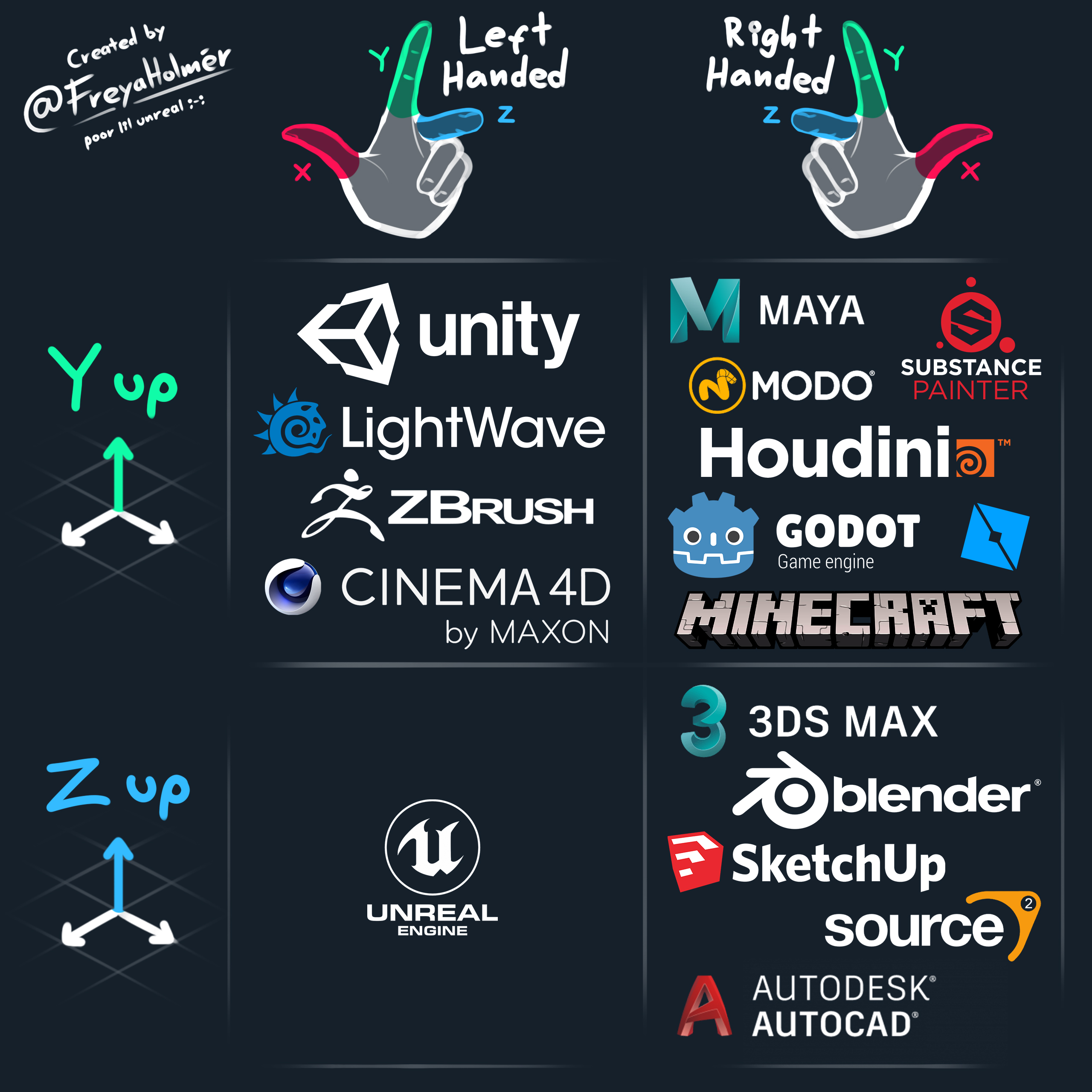Coordinate Systems
When dealing with voxels (and math in three-dimensional space in general), it is extremely important to get your coordinate systems and the conversions between them right. Even slightly wrong conversions can (and will) lead to massive headaches and horrible debugging sessions.
As such, it is a good idea to do one or more of these:
- Add the coordinate-system being used to every position, rotation and scale value.
- Restrict the mixing of coordinate-systems, by using a type-system that let's you create new types from existing types.
- Document the coordinate-systems of function parameters.
Note that, depending on the software you are using, the concrete definition and usage of coordinate-systems can vary wildly...

Commonly Used Coordinate Systems
Authors Opinion: I recommend using a right-handed coordinate-system with Z-up or, if you prefer, Y-up.
- Blender, SketchUp and various Autodesk products use it.
- Z-up, so that a sheet of graph-paper represents the X/Y plane.
Also, keep in mind that the great majority of 2D renderers and displays available use a X-right + Y-down system, mainly due to western writing systems being oriented that way.
Terminology
Now then, let's get to the various coordinate systems!
The order in which they are listed is kinda important, so try to keep it in mind. ;)
Voxel/Sample Space
![]() The 'inner' coordinate system of an individual voxel.
The 'inner' coordinate system of an individual voxel.
Object/Local/Chunk Space
![]() The local coordinate system of an individual object, such as an entity or a chunk.
The local coordinate system of an individual object, such as an entity or a chunk.
World/Scene Space
![]() The global coordinate system that is the entire scene. This is where almost all the (gameplay-related) math will occur.
The global coordinate system that is the entire scene. This is where almost all the (gameplay-related) math will occur.
View/Camera Space
![]() The view of a camera into world space.
The view of a camera into world space.
(Homogeneous) Clip Space
![]() The camera space with a perspective- or orthographic-projection applied,
forming a prism/box called the clip volume.
The camera space with a perspective- or orthographic-projection applied,
forming a prism/box called the clip volume.
- This is the space that we output to in a vertex shader.
- i.e.:
gl_Positionis in clip-space.
- i.e.:
- Coordinates are defined to be homogenous here.
Normalized Device Coordinate(s) Space
![]() The clip space after perspective coordinate division, if applicable.
The clip space after perspective coordinate division, if applicable.
Screen/Window/Framebuffer Space
![]() The space where whole-numbered coordinates correspond to pixels on a screen,
falling into a range of either...
The space where whole-numbered coordinates correspond to pixels on a screen,
falling into a range of either...
[(0,0), (WIDTH-1,HEIGHT-1)][(1,1), (WIDTH,HEIGHT)]
References
- Wikipedia
- Learn OpenGL: Coordinate Systems
- Freya Holmérs Cheat Sheet
- WebGPU Specification
- Setting Up a Proper Projection Matrix for Vulkan
- Homogeneous Coordinates, Clip Space, and NDC | WebGPU
- Why is clip space always referred to as "homogeneous clip space"?
- Explaining Homogeneous Coordinates & Projective Geometry
- When does the transition from clip space to screen coordinates happen?
- Scratchapixel: The Perspective and Orthographic Projection Matrix
- OpenGL Projection Matrix
- Lecture 05: Spatial Transformations (CMU 15-462/662)
- WebGPU: Point Rasterization
- OpenGL
ARB_clip_control